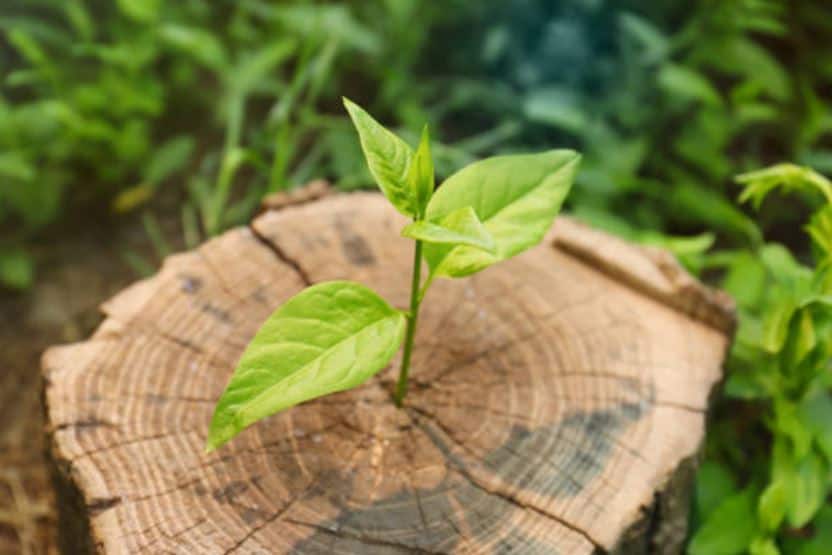A tree in the backyard that has been around for a long time seems more like a friend than a natural environment feature. It is naturally inclined to swiftly fill that space when something dies or must be eliminated. Experts, however, advise against giving in to this temptation.
Can a tree be planted near or where a stump has been cut down? Continue reading to learn more about what the subject matter experts have to say.

Planting Near a Tree Stumps
The general agreement among experts is that it is not a great idea to plant a new tree in or close to an old stump. There are several drawbacks. Secondly, the previous tree could have depleted the soil’s nutrients, which a new tree needs to flourish.
Also, if the old tree was cut down due to a disease, some pathogens might still be present in the soil and infect the new tree. Lastly, there is the issue of soil space. If the arborists did not remove the old tree’s roots, they could be blocking the new tree’s roots from growing in.
Can a Fresh Tree Be Planted Following Stump Grinding?
There are several opinions on this subject. Some scientists argue that the sawdust leftover following stump grinding may change the nutritional balance of the soil. However, the top scientists at the Lady Bird Johnson Wildlife Center strongly disagree. They know from experience that a young tree may thrive in this soil.
Little wood chips buried in the ground will degrade and improve the soil. Filling up the stump hole will need bringing in high-quality, organic soil devoid of weed seeds, but doing so is still a smart idea.
Everyone agrees that waiting a while following stump removal is a good idea. You want to avoid being caught off guard by fresh sprouts emerging from old roots that are still alive. If they do, you should remove them and grow new plants when the roots have broken down in the soil.
When You Still Choose to Plant
Sometimes a gardener chooses to place a new tree in the same spot as one previously there. Here are some suggestions to assist the young tree in living if this is the case.
First, choose the replacement species carefully if the previous tree has to be destroyed due to a plant pest or disease. Choose one that will not be at risk from this problem.
Second, make every effort to prepare the area by removing old roots and adding quality soil and organic compost.
Finally, give yourself as much time as possible, at least a month and ideally a year or more. The new tree will have an easier time establishing itself the longer the old tree’s roots are allowed to decay.


